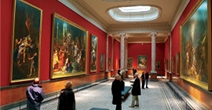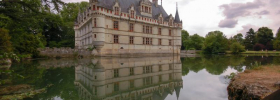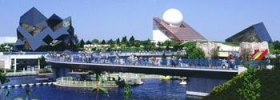 Home
Home- > Tours
- > Midi-Pyrénées
- > Gers
- > Fleurance
- > Welcome to fleurance
Welcome to fleurance
| Topic | Sciences and discovery |
| Departure | FLEURANCE (32) |
| Details | Commune located in Armagnac, in Country of Gaure, on the trunk road 21 between Lectoure and Auch. It is crossed by Gers and the old trunk roads (trunk road 653 and trunk road 654). |
Discover Fleurance

In the case of Beaumarchais, il shows that the civil power predominated over the religious power. 24 wooden pillars supported the primitive hall, wich housed in its center the consular house (as in Solomiac). A second hall replaced it, then a third one wich you can admirate today. Ardenne, an auscitan architect, built it in the 19th century, on a principle of the Middle Ages : a maximum of space with a minimum of surface on the ground.
Accommodation nearby
The Fountains Statues
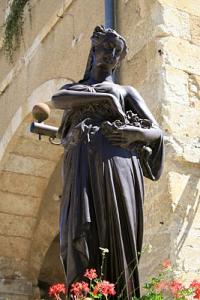
Situated at the four corners of the Market Hall, they were bequeathed by Adolph Cadeot, the mayor of Fleurance in the middle of the 19th century. They represent the four seasons. Indeed, all are dressed differently.
Accommodation nearby
The St Laurent church of Fleurance
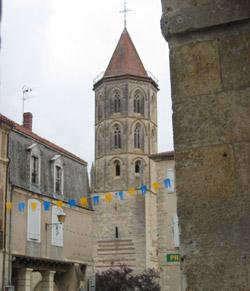
In reality, this church, commonly called St Laurent is a patron with the Virgin and St John the Baptist. It was begun in the 13th century and finished in the 14th century, it displays the evolution of Southern Gothic Style. In the church, you can admire:
- ows of Arnaut de Moles made between 1507 and 1511: in the center, "the Holy Trinity"; in the North, "Scene of the Saint's life"; in the South: "the tree of Jesse".
- "The Virgin with a child" this gilded stone statue dates bach to 15th century and the numerous miracles are attributed to it.
- The paintings of Jean-Baptist SMETS.
- The Organ completed en 1865 by Jules MAGEN, a pupil of CAVAILLE COLL.
Accommodation nearby
Visit the village of Brugnens
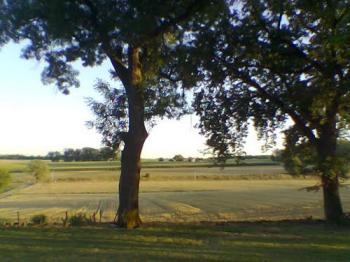
Brugnens would be a built village, at the time of the “francs”.
Front, there existed only one hamlet located beside the cemetery.
In 1806, the municipal council projects to build a hydropathic establishment with the assistance of the sub-prefect and of the Minister of Interior Department but the taken steps remain vain. The Mayor then proposes to build the thermal baths with the exclusive expenses of the commune. 12 drillings and an analysis of water are carried out. Sulfurous water could be drunk or be used for mud baths intended to look after rheumatisms.
The mayor considers even the construction of a station to receive the potential curists. After many unfruitful steps, and without support to make succeed their ambitious project, the enthusiasm of Brugnensois for their thermal spa and their station grows blurred little by little…
The current church was built in 1845 in the fields of old (which one still finds some ornaments today). It shelters a marble furnace bridge which has a glazed former face which lets appear relics of Saint Urtisie, martyrdom extracted the catacombs of Rome and whose vocation was to cure the diseases. During several decades, the veneration of these relics gave place to important pilgrimages.
Within this peaceful small village gersois, you can also admire other patrimonial richnesses: the Vault of Châteaurenard and an old Windmill.
Accommodation nearby
Visit the villge of Castelnau d'Arbieu
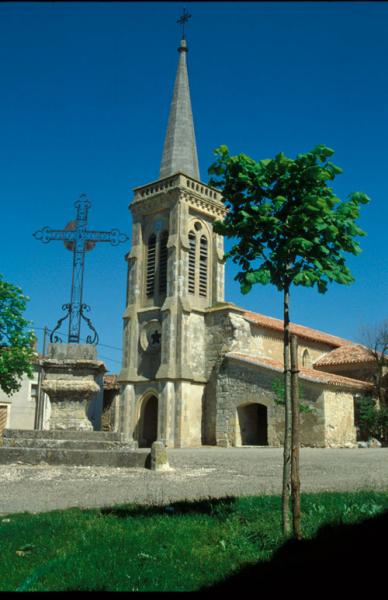
Castelnau d' Arbieu, old village strengthened is during very a long time a powerful commune, playing a big role in Lomagne.
The church dates from XIInd and XIIIrd centuries. Originally, it had a wall-belfry replaced in 1856 by a square tower of which the stone arrow is surrounded at the base of a balustrade. A turret joined with the bell-tower contains a snail stone staircase. Top of the bell-tower, at an altitude of 206 m, one has a remarkable point of view on the landscape of the neighbourhoods.
The castle of Quinsac, located at 2 km at midday of the village, was built in the middle of the XIXth century, undoubtedly on the ruins of the castle of the family of Montaut, former lord.
The Bridge of Aurenque, with a few kilometers in the west of the commune, dates from XIst and XIInd centuries. With the cascade, the island and 2 banks of Gers, they constitutes a site registered with the Historic buildings.
Several elements of the small inheritance deserve to be quoted: beside the church, you can admire a “work”, it means an apparatus used for the door-fitting of the animals.
To the cemetery, a curious stone embedded in the wall carries the inscription Above “the flagstone where formerly had passed the skin of excommunicated”.
In Aurenque, you will see a laundrette and a well.
Finally in the middle of this picturesque village, you will be able to admire a superb panorama since you are on a headland dominating wood and the fields, the slopes and the valleys… Many houses were built with the local stone and the central place of the city releases a rustic charm.
Accommodation nearby
Visit the village of Cézan

Cézan, a charming village medieval is with the convergence of several Roman ways.
Cézanais, Joel DESBARATS, engraved, about 1910, on a wall of its coffee a chart representing of the Gallo-Roman sites and the supposed Roman ways.
Gallo-Roman vestiges were found, in the east of the village. The Glézia locality, excavations made it possible to release what was undoubtedly a church.
In XIInd century, a feudal castle is built. It dominates a small valley. The castle is in the east of the church, in the site now covered of several houses, pertaining to private individuals. A stone an oval enclosing ditch and wall protect the village which had 2 doors, one in the east and the other in the west.
Towards the end of the one hundred Year old war, the village resists to the English but is entirely destroyed. A tower located in front of the frontage of the church is demolished in the years 1880. Only the pillars of the door, at the entry of the village, are still visible today.
Accommodation nearby
Visit the village of Gavarret sur Aulouste
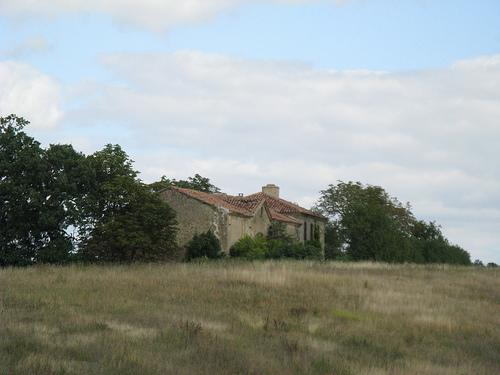
In this medieval village, you will be able to discover some richnesses of the time. A round tower testifies to the presence, formerly, of a feudal castle. It was demolished to make it possible to increase that of Miramont-Latour.
The church, to Romance style, goes back from XIst century (1080). It is located at the east of the old feudal castle. Its main door, altered later is of Gothic style. The western frontage is dominated by a wall-belfry. This building is dedicated to Holy-Madeleine and one thinks that it was about a vault seigneuriale. Inside, two tables represent for the first, a crucifixion and for the second, Marie Madeleine. But also a stoup and a baptistry out of stone, both very old and classified. In 1979, work of restoration was undertaken with the church. Squares of old houses were recovered for the pavement and of wood were offered to renovate the frame.
To the place called “In Tuquet”, the tradition reports that formerly there was a church. You discover there several tombs hones some which contained skeletons and furniture (irons of swords, lances, loops and belts of the period mérovingienne). Near the church, drew up an electric transformer which wasted the sight on the monument. After long steps and strong of the support of the inhabitants, Marie Laurent, Mayor of the commune, obtains finally the demolition of the transformer. In remembering, a plate was affixed on the wall-belfry with this inscription: “Ci-to lie the transformer whose Marie Laurent was the demolition contracter returning to the church her beauty, with the commune its serenity”.
Accommodation nearby
Visit the village of Goutz
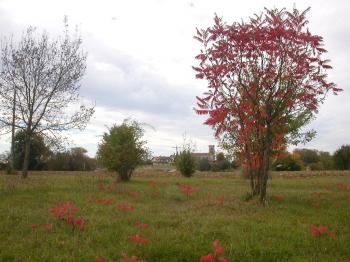
Goutz is a village certainly occupied by the Romans, even if no vestige attests their presence of it. This assumption is announced because we know that Gallo-Roman villas were destroyed at the 5th century.
In XIIIrd century, a castle is built. There remains today only one beautiful mound surrounded by a ditch: it is in fact the base of this castle called “Lou Loc”.
The church, very old, is also one of the important buildings of the borough. Indeed, after having noted a state of important decay, the Becbec abbot and his parishioners decided to rebuild it starting from the old foundations. Inside, tou can appreciate the many paintings carried out by Mr. Lasseran, a painter of Lectoure (in particular on the wall of the chorus). A chrism embedded above the main door of the old presbytery undoubtedly comes from the old church from the village.
Two statues of the Virgin are drawn up, with each entry of Goutz.
Undoubtedly because of the presence of Hospital, a school of surgery functioned in Goutz until the Revolution. Young people followed courses of anatomy, medical care, of preparation of remedies in order to obtain a certificate of control in surgery, before continuing these studies with the Faculty of Montpellier.
Accommodation nearby
Visit the village of Lamothe Goas
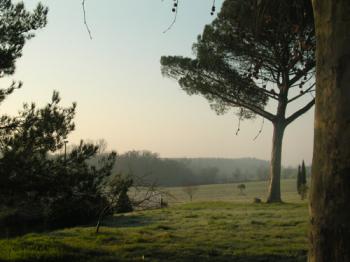
Lamothe-Goas while bearing this name points out the existence of a primitive mound (which does not exist any more) and of Goas, surname of the owners of the castle.
The castle places a vault which will remain until the XIXth century the single church of the village. The current church is built on a ground given by the countess of Preissac. Dedicated to saint Charles Borromée, this religious building present of the local characteristics: a flat ceiling out of wooden covers a single vessel and a platform out of wooden occupies all the width of the wall, west coast. The nave communicates with the vaults of north and the south by an ogival arcade. Opposite the church, a stone-built house with balcony, which was used as presbytery, keeps all its traditional seal.
The castle of Lamothe, built on the foundations of the medieval residence, knew several rehandlings with XVIIth and XVIIIth centuries. The countess of Beaumont played a big role to make it transform. A large court bordered by agricultural buildings, stables and the orangery announces the main courtyard organized in “U”. A vault is added to the south of the right wing. Dedicated to the Virgin, she with the characteristic to be directed in north. To increase the cemetery, Mr. Goulard, owner of the castle, give to the commune in 1877 a piece of more than 7 ares. In exchange, he asks that one hold for him in the angle of the ground part of 22 m ² for a family vault with perpetuity. Imposing monument, this tomb is decorated sculptures and is surrounded by a wrought iron grid.
Accommodation nearby
Visit the village of Pauilhac
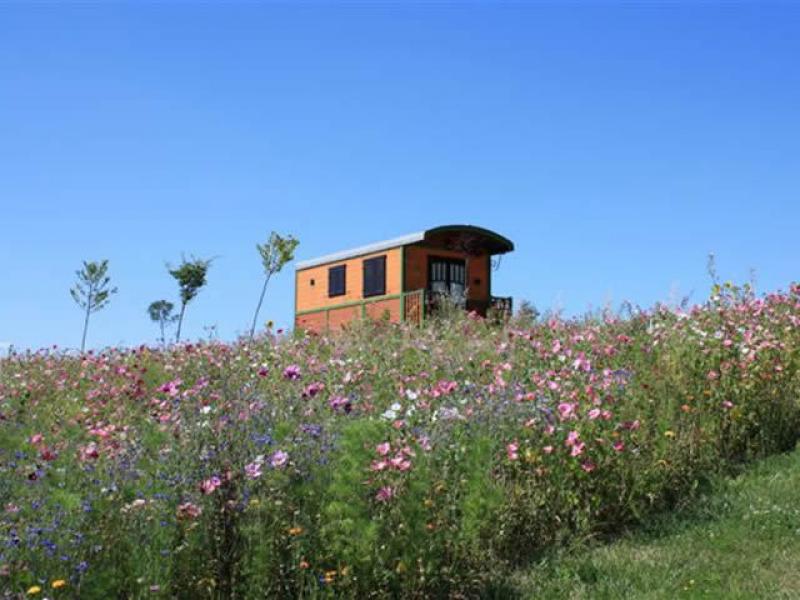
Pauilhac is a village strengthened as of the 13th century.
The Cistercian abbey of Bouillas is founded in 1125 thanks to the gift of the lord of Pauilhac, which gives to the cistercians part of the forest of Porteglands.
The convent whose construction finishes in 1150, thrives quickly. It will suffer consequent damage caused by the violences made by the Protestants, in 1567. Given in state, it is sold like national good with the Revolution. The unit however will be destroyed put aside an any small portion who remains today on foot, to testify to this past.
The church Saint Orens includes a nave with three vessels. A large curved gate opens the Western frontage. The interior is richly decorated in particular with the bust of Strapping man with Galard, abbot of Bouillas until 1569. A mounting placed in height on the southern wall would contain the relics of Holy Philomène.
The common always counts two of its large residences with the castle of Bosc mainly built out of brick. Antoine-Louis Percin, doctor in right, lawyer, general advisor and mayor of Fleurance made build in 1840, the castle of Olympe. You can also go to walk you in the forest of the Woodpigeon, which is departmental forest today.
For the small inheritance: three preserved windmills and three pigeon listed on the commune. To also see the country house of Freycinet, minister of Napoleon III.
Accommodation nearby
Latest news on : Welcome to Fleurance
Tourism near
 Visit the city of Fleurance
Visit the city of Fleurance - 1 Museum
- 2 Monuments
Tours
 Lectoure
Lectoure
 Come to discover the heart of Gascogne
Come to discover the heart of Gascogne






















